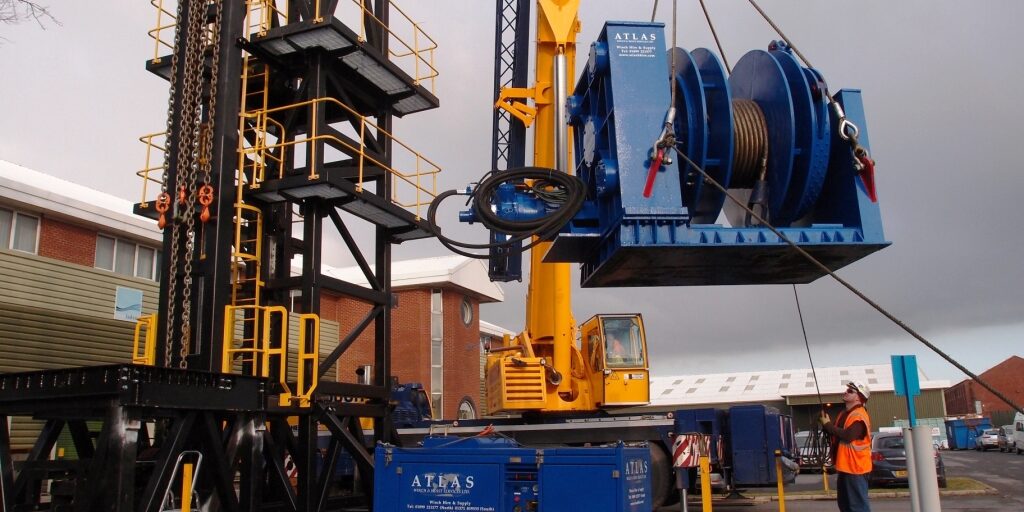When it comes to the lifting industry, safety is paramount. With large and heavy loads often being moved, accidents are always a possibility, which is why the necessary safety measures must be taken in order to mitigate the chances of these happening.
That’s where load monitoring comes in. Establishing reliable and regular load monitoring is an essential part of any safety plan and risk assessment when working with lifting equipment. In this guide, we’ll discuss what this entails, as well as why it’s important, the different equipment that benefits from such monitoring and the different methods of load monitoring that can be used.
Keep reading to ensure you’re operating your load equipment safely.
What is Load Monitoring?
As its name suggests, load monitoring refers to the process of testing and monitoring the loading capabilities of different lifting equipment. It works by working out the maximum lifting loads a piece of equipment can hold, along with the duration it can hold certain weights, offering an acceptable working range within which you must stay during your lifting operations.
This can be carried out both before and during a project, depending on the severity of the loads being lifted and the length of the project.
The process of load testing usually involves a load monitoring system, which can be integrated with your lifting devices in order to determine how much force is being exerted on your equipment as it begins to lift a load. As well as the weight, it’s able to track any tension on your equipment throughout the lifting and handling procedure.
During the process of load testing, equipment will be subjected to gradually increasing loads. Doing this allows you to identify any weaknesses or defects in the equipment’s system that otherwise may have gone unnoticed. If issues are identified, then the necessary maintenance and repairs can be carried out to address the problem promptly. Doing so then helps to reduce the risk of unexpected failures during regular operations.
Why It’s Important
There are various reasons as to why load testing and monitoring is so crucial – especially so in many large-scale industrial operations.
Firstly, it’s essential for ensuring safety. Many sectors that rely on heavy-duty lifting equipment for their day to day operations are typically involved with work that is on a large scale, requiring them to regularly lift or horizontally pull heavy and bulky loads. Due to the nature of such loads, it’s important that these are handled with the utmost reliability, as they could cause severe injury to nearby personnel should equipment fail and drop these loads.
Not only could such a situation pose a safety hazard, but it could also affect the progress of a project. Should equipment unexpectedly fail due to overloading or other malfunctions, this not only causes delays due to the repairs that would be required before equipment could be used again, but dropped loads could cause damage elsewhere, further increasing downtime and setting the project back.
Load monitoring isn’t only in your best interest for these reasons, but it’s also a legal requirement. Regulations such as The Lifting Operation and Lifting Equipment Regulations 1998 (LOLER) and the Provision and Use of Work Equipment Regulations 1998 (PUWER) place duties on employers to ensure that all lifting equipment is safe to operate, which includes operating it within its reasonable loading capabilities and carrying out testing to determine what these are.
If you fail to test and monitor the safe working load of your lifting equipment, then you could find yourself paying the legal consequences should they malfunction mid-operation – especially so if significant damage or injury to personnel is caused.
Equipment that Requires Monitoring
Winches
A winch is a mechanical device used to pull in, let out or adjust the tension of a rope or cable. The standard component of a winch includes:
- A cable
- A spool
- A motor
The motor turns the spool around which the cable is wound, thus allowing it to be adjusted. There are many different types of winches, from smaller hand-operated winches and electric winches, to more heavy-duty diesel winches and hydraulic winches.
Thanks to the incredible and reliable power capabilities of winches, especially the latter mentioned types, they are heavily relied upon in many industrial settings for tension adjustment and load pulling. Some of the industrial environments they are commonly used in include:
- Construction
- Marine
- Oil & Gas
- Renewable Energy
- Bulk Handling
- Manufacturing
Hoists
Many often use the terms ‘winch’ and ‘hoist’ interchangeably, however there is a difference between the two. Whilst both are used for pulling purposes, a winch technically refers to equipment that pulls loads horizontally, whereas a hoist is what’s used to lift and lower loads vertically.
Hoists also operate in the same way as winches, featuring a chain or a rope that is wrapped around a drum (spool). Some of the common industries in which they are used include:
- Construction
- Food processing
- Automotive
- Mining
- Freight Yards
Cranes
Technically speaking, a crane isn’t its own form of lifting equipment, but a piece of machinery that incorporates winches into its lifting operations. The crane’s winch works in conjunction with other aspects of the crane’s composition in order to achieve large-scale lifting.
Looking at the different features of a standard crane, you have the:
- Foundation
- Tower/mast
- Turntable
- Counter jib
- Counterweights
- Main winch and motors
- Rear pendant
- Apex
- Fore pendant
- Trolley
- Hook block
- Jib
- Operator’s cab
Although the motorised winch is what carries out the actual lifting, the other features of the crane allow it to achieve such large-scale tasks. For example, the foundation offers it a stable base whilst the mast offers it height, then the jib gives it a long reach and the counter jib and counterweights allow large and heavy loads to be handled at such a height and distance with stability.
Types of Load Monitors
Running Line Monitors
One of the devices designed to monitor and analyse the performance of lifting equipment and their associated systems is a running line monitor (RLM). This serves several purposes, including:
- Tension monitoring: The tension applied to the cable during operation is measured, which is crucial for ensuring that the equipment is operating within the safe working limits and not exceeding the equipment’s maximum load capacity.
- Line speed: Monitoring the speed at which the cable is being wound or unwound helps to determine whether the speed remains within the safest and most efficient parameters, allowing you to maintain control over operation.
- Load monitoring: Real-time data is provided on the load being lifted or pulled by the equipment so you can see whether the weight is within the safe working limits, which is essential information for preventing overloading and avoiding potential accidents or equipment damage.
Using an RLM to continuously monitor these various parameters can help you to assess the overall performance of your lifting equipment systems. Since it can help you detect abnormalities or inefficiencies in operation, timely maintenance and adjustments can be taken in order to optimise performance without causing delays or safety hazards.
Load Links
Load links, also known as load cells, are small devices that are designed to measure the force between a winch line and the load being lifted. They provide wireless data to a base station or handheld unit outlining the real-time tension of the load.
Although small, they are incredibly effective, being able to monitor loads up to 500 tonnes.
As well as measuring line tension, they are also ideal for measuring the weight of loads. By attaching a load link to a lifting device, the weight of a load can then be measured directly as it’s lifted, allowing you to ensure that this is within the safe working limit for that piece of equipment.
Their small size, real-time data logging, versatility, ease of use and digital data logging makes them highly popular for measuring and monitoring loads and ensuring safety and efficiency in your lifting and rigging operations.
Lifting Equipment Hire
Here at Atlas Winch Hire & Hoist Services, we’ve got all the load equipment you could need, including load monitoring products.
From load links to running line monitors and built-in systems, you are free to choose a product from our standard winch range, or have one incorporated into a bespoke winch build. An optional data logging feature can also be included as part of your package, which allows you to conveniently download an accurate record of your lifts or pulls.
Whether you’re in need of reliable lifting equipment or load monitoring devices, don’t hesitate to get in touch with us today to see the options we have available to you in more detail.








